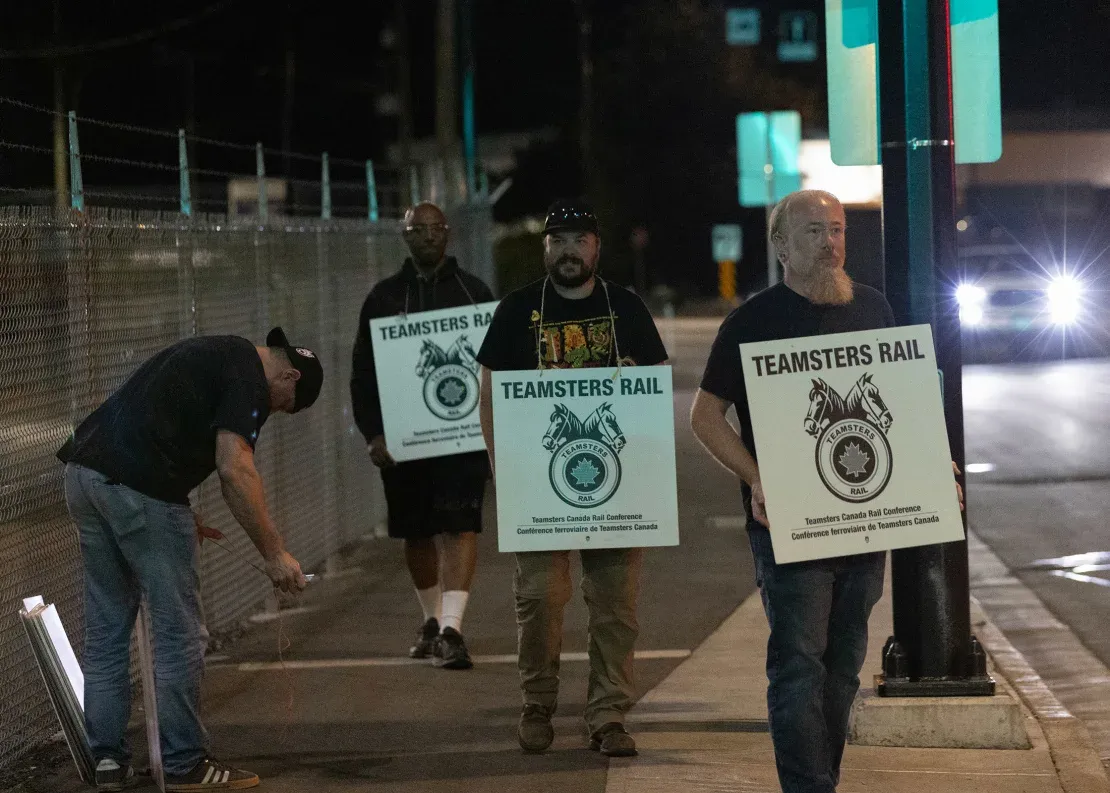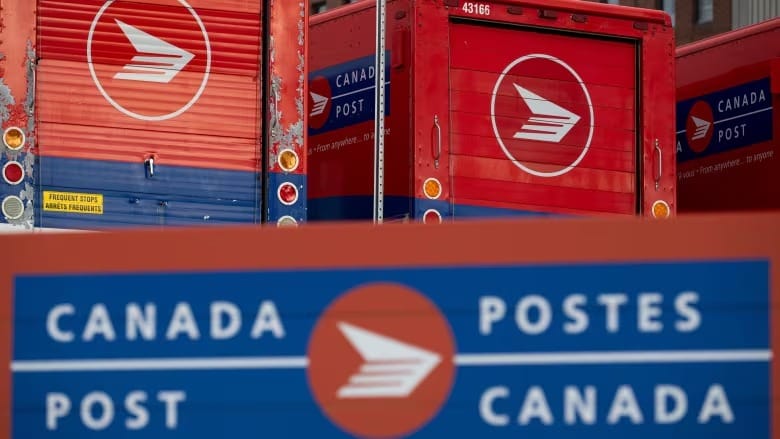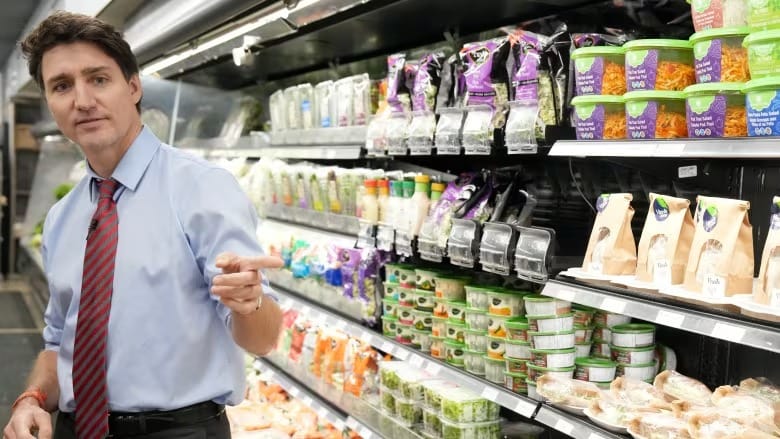Canadian freight railroads shut down, dealing a potential blow to North America’s economy
This is the first time both major Canadian railroads have simultaneously shut down due to a labor dispute. The last industry work stoppage was a 60-hour strike at Canadian Pacific in 2022, preceded by a nine-day strike at Canadian National in 2019.

Canada’s two largest freight railroads, Canadian National (CN) and Canadian Pacific Kansas City Southern (CPKC), have shut down their operations, locking out 9,000 Teamsters union members who operate the trains. This move could have significant repercussions for both the Canadian and US economies.
Nearly a third of the freight handled by CN and CPKC crosses the US-Canadian border, and the shutdown threatens to disrupt various US industries, including agriculture, automotive, construction, and energy, depending on how long the stoppage lasts.
In a statement released Thursday, shortly after the lockout began at 12:01 am ET, CPKC explained its decision: “CPKC is acting to protect Canada’s supply chains and all stakeholders from further uncertainty and the more widespread disruption that would be created should this dispute drag out further, resulting in a potential work stoppage occurring during the fall peak shipping period. Delaying resolution to this labor dispute will only make things worse.”
The shutdown highlights the interdependence of the Canadian and US economies, with many industries relying on the seamless movement of goods across the border. For instance, US auto plants may face temporary shutdowns if they cannot receive engines, transmissions, or stampings from Canadian plants. Similarly, US farmers might experience fertilizer shortages, and water treatment plants near the Canadian border could run out of chlorine used for water purification.
This is the first time both major Canadian railroads have simultaneously shut down due to a labor dispute. The last industry work stoppage was a 60-hour strike at Canadian Pacific in 2022, preceded by a nine-day strike at Canadian National in 2019.
Thursday’s lockout differs from a strike, where union members refuse to work; in this case, management is barring nearly 9,000 Teamsters from working.
CPKC spokesperson Patrick Waldron said halting operations now is preferable to risking a union strike later in the fall. “We’re right up against the fall peak shipping season. You have a new Canadian grain crop coming in, the first not impacted by drought in two years,” Waldron told CNN before the lockout. “You have Christmas presents in containers arriving at ports. If this pushes further into the fall shipping period, the consequences are going to be worse.”
The Teamsters union has been seeking a contract that addresses both sides' concerns, but they argue that the railroads’ demands would reduce rest periods and increase safety risks. “Throughout this process, CN and CPKC have shown themselves willing to compromise rail safety and tear families apart to earn an extra buck,” said Paul Boucher, president of the Teamsters Canada Rail Conference, in a statement early Thursday. “The railroads don’t care about farmers, small businesses, supply chains, or their own employees. Their sole focus is boosting their bottom line, even if it means jeopardizing the entire economy.”

The railroads deny that their proposals would compromise safety, asserting that they offer safety protections beyond what is required by Canada’s recently strengthened regulations. They blame the union for the lack of an agreement and have called on the government to intervene by referring the dispute to binding arbitration, a step the government has so far refused to take.
The chambers of commerce in both the United States and Canada issued a joint statement on Tuesday urging the Canadian government to take action to keep the railroads operating. “A stoppage of rail service will be devastating to Canadian businesses and families and impose significant impacts on the US economy,” they said. “Significant two-way trade and deeply integrated supply chains between Canada and the United States mean that any significant rail disruption will jeopardize the livelihoods of workers across multiple industries on both sides of the border.”
Economists warn that there isn’t nearly enough truck capacity to handle the freight typically carried by the Canadian railroads. A report from Anderson Economic Group, a Michigan research firm, estimated that a three-day strike would cause $300 million (407 million Canadian dollars) in economic damage, while a seven-day strike could result in losses exceeding $1 billion (1.4 billion Canadian dollars).
Kristin Dziczek, a policy advisor with the Federal Reserve Bank of Chicago, said that even a brief shutdown would have lasting effects: “It will take weeks to unwind the problems caused by a shutdown of even a few days because things will end up not where they’re supposed to be.”
Anticipating a work stoppage, both railroads stopped accepting shipments of hazardous materials last week to avoid having these items stuck on trains. This decision has already caused some disruptions, according to John Drake, the US Chamber’s vice president of transportation, infrastructure, and supply chain policy. “We’re already hearing from businesses not seeing their shipments move,” he said.
Spokespeople for the railroads explained that management needed to proceed with the lockdown plans because they couldn’t risk the union initiating a strike with only the 72 hours of notice required by Canadian law. “We can’t shut down a rail network by just flipping a switch,” Jonathan Abecassis, spokesperson for Canadian National, told CNN on Wednesday before the lockout. “We needed to start a safe and secure shutdown.”
Unlike in the United States, where President Joe Biden and Congress intervened to prevent a rail strike in 2022, Canadian law does not allow Prime Minister Justin Trudeau to block a strike or lockout while a panel reviews the demands and makes recommendations. Canadian Labor Minister Steve MacKinnon met with union and management negotiators in recent days in a failed attempt to reach a deal. Although the railroads have requested that the dispute be referred to binding arbitration, the unions oppose this, and the Trudeau administration has thus far rejected the option.
“We’re hoping he reconsiders his position,” said CN’s Abecassis.
At a press briefing on Thursday, Prime Minister Justin Trudeau declined to commit to such action, but he did confirm that MacKinnon remains directly involved in efforts to resolve the shutdown. “We are not taking this lightly, obviously, because Canadians across the country are worried about it,” Trudeau said. “We will have more to say shortly on what we’re doing to make sure that the right solution is found quickly for the economy.”





